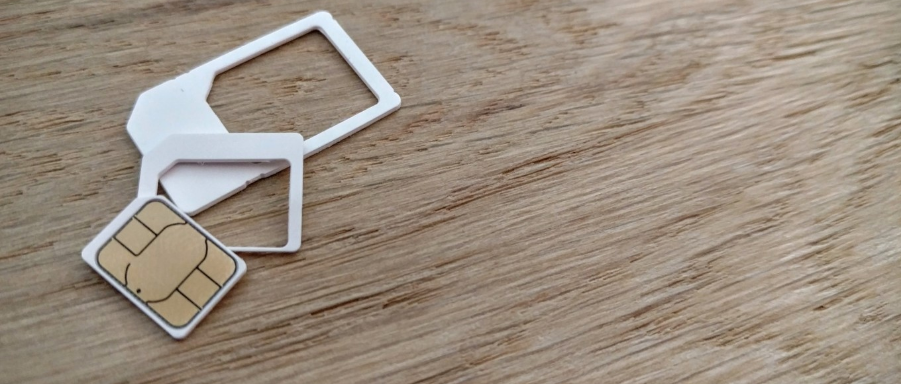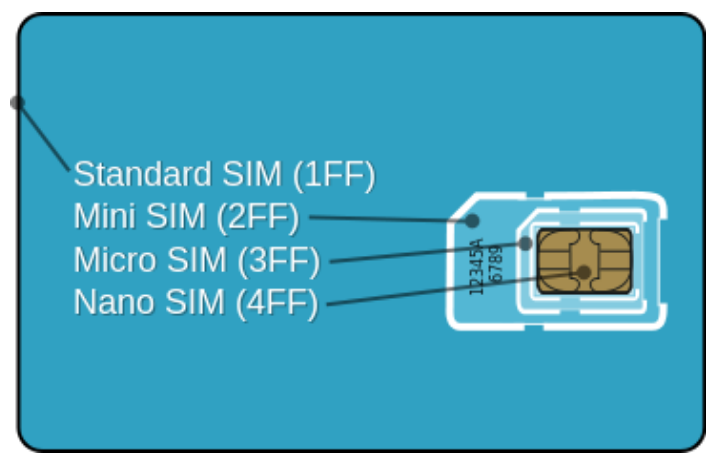
We are going to explain how SIM cards work and the differences between SIM, MiniSIM, MicroSIM, and NanoSIM, so that you can identify them and know which type you have in your mobile or what type you need to put on the new mobile you have. bought.
Over time, the cards that are inserted into mobile phones have evolved. They have been getting smaller, safer, and with more capacity, and although currently, almost all mobiles use only one or two of these types, it never hurts to know them all in case you need to identify them at some point.
How SIM cards work
The SIM card or Subscriber Identity Module is a small plastic card that has a chip attached to it, and that you have to insert into your mobile phone or smartphone. This chip, safely stores your telephone number, as well as the access codes of a specific user in a telephone operator.
Conceived in the 1970s, smart card technology or Smart Cards had different uses over the years. At the beginning of the 90s, they were incorporated as a mandatory identification element for users in GSM telephone networks. They would have to be mandatory, and all mobiles would have to have one to be identified when making calls.
A SIM chip has eight electrical contacts that allow it to interact with the mobile in which it is inserted. Over time, in addition to the user’s authentication data on the network, SIM cards have been expanding their storage capacity. They went from the original 16 KB to being able to store more information, such as Internet connection data or a simple phonebook in which to save some phone numbers.
The cryptographic and security system of this type of card has been outdated a long time ago and is no longer as useful. However, the use of SIM cards is still widespread throughout the world, both in GSM and CDMA networks, which are the two most used (especially the first) to send mobile phone signals around the world.
Therefore, the reason why the different types of SIM cards are still used today is not so much for their security as for their great convenience. And it is very convenient to be able to store user data on a physical medium that you can easily move from one phone to another without having to do any extra configuration. In addition, your phone number is usually printed on the plastic of the SIM, something that can also help you when you change the card to a mobile.
SIM card types

Over time, SIM cards have evolved and become smaller. Currently, depending on the age of the device or its range, you can find one or two of these different types, but it is easy to identify each type of card by its size, so you will not have problems.
- SIM: The original SIM cards are no longer used, and were about the size of a credit card. It measured just 33 × 66 millimeters and had so little space that barely 20 contacts and 5 or 6 messages could fit.
- MiniSIM: It is one that we currently know as SIM to dry, but it was not the first existing model. It was the standard developed for the SIM card to fit in mobile phones, and it has a size of 15×25 millimeters.
- MicroSIM: In 2003 this new type of card was developed, although it was not until the arrival of the iPad that Apple made the entire industry begin to adopt it. With a size of 12 × 15 millimeters, it was created to expand the memory and security of the SIMs, but it ended up being used to make it smaller.
- NanoSIM: An evolution of the Micro SIM, with which it was possible to create an even smaller card of only 12 × 9 millimeters. It began to arrive in 2012, and its mission was to optimize the hardware space of a phone, maintaining its external size but with greater volume for certain components.
Currently, identifying which SIM you have is quite simple. In most modern smartphones, the NanoSIM has almost always been used for a few years, and you will identify it because practically everything in it is the chip, with almost no plastic around it other than the one on its back.
SIMs and MiniSIMs are practically not used anymore, although they are considerably larger. Therefore, the other current option is that you end up with a MicroSIM. The MiniSIMs are identified because on the side that the chip is on you will see a large amount of excess plastic, and they are cards as big as the tip of a finger. The MicroSIM also has some plastic around it, but it is a very small strip, while the NanoSIM has practically nothing.
In the image above you can see the physical difference between the three. The card you see is a NanoSIM, and below it, you can see the MicroSIM and MiniSIM silhouettes growing in size, each larger than the last. As for why they look like this, it is because in many stores you can find adapters to be able to put the NanoSIM in the slots designed for other cards, or templates to cut out a larger card to use as a NanoSIM.

Sharlene Meriel is an avid gamer with a knack for technology. He has been writing about the latest technologies for the past 5 years. His contribution in technology journalism has been noteworthy. He is also a day trader with interest in the Forex market.











